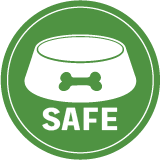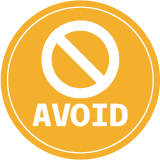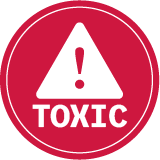Your Puppy's Size Secret Is Hiding in Their Bones
Understanding the basics of puppy growth doesn't have to be confusing. Here's what you need to know about how puppies grow, how long it takes, what affects their growth, and how you can support them at every stage.

STORY AT-A-GLANCE
- Puppy growth isn't just about getting bigger — it's all about growth plates, specialized areas of cartilage located at the ends of long bones that control how and when your dog reaches full physical maturity
- Breed and size class largely determine your puppy's growth timeline; smaller dogs mature more quickly, while large and giant breeds may take up to 24 months to fully develop
- Puppy growth unfolds in distinct phases, each requiring tailored care — from early socialization and teething to adolescence, when behavior shifts and larger breeds continue growing physically.
- Nutrition plays a vital role in skeletal health; feeding a species-appropriate, balanced diet — especially for large-breed puppies — supports proper bone development and helps prevent orthopedic issues
- While exercise promotes healthy development, high-impact activities such as excessive jumping should be limited during bone growth to avoid injury; free play, short walks, and mental enrichment are ideal for growing puppies
Raising a puppy is a deeply rewarding journey, filled with joyful milestones, playful chaos, and countless questions. One of the most common questions asked by pet parents is, "When will my puppy stop growing?" However, the answer is not as simple as a number on a calendar.
In truth, the growth process involves more than just weight gain and height — it's intricately tied to what's happening inside your puppy's bones.
The Stages of Puppy Growth
The growth of puppies occurs in distinct phases, each accompanied by physical, mental, and behavioral changes. Being familiar with these phases will help you provide appropriate care and support to your young furry companion.1
- Awakening and exploration begin during weeks 2 to 6 — Your puppy's eyes and ears begin to open, and by week 3, they start taking their first wobbly steps. Social behaviors like play and vocalization also begin.
- Months 2 to 3 is for socialization and learning — This is the time when rapid physical growth and cognitive development occur; it's the ideal window for socialization with people and other pets. Teething also begins, leading to exploratory chewing.
- Months 3 to 6 is when major growth spurts occur — There's significant bone and muscle development, and the puppy begins resembling a smaller version of the adult dog. Training should be consistent and gentle during this time.
- Months 6 to 12 is the period of adolescence — While some dogs reach full size, others continue to grow. Their behavior may become more independent or challenging. This is the best time to consider transitioning to adult routines, with your vet's guidance, as well as continuing training during this more challenging time.
- Months 12 to 24 are the final stages — In large and giant breeds, skeletal growth continues. Muscle, fat, and coat development round out the adult form as well.
The Foundations of Growth — A Timeline for Puppy Development
Puppy growth follows a general pattern, but the speed and final size depend heavily on breed, nutrition, genetics, and care. While some puppies mature in under a year, others continue growing until they're nearly 2 years old.
Knowing your dog's expected size class — small, medium, large, or giant — can help you anticipate their needs. Below are the general age ranges based on your pet's size:2

While most dogs are commonly considered adults at 18 months of age, physical growth may continue beyond this milestone, especially in large and giant breeds.
Inside the Bones — Growth Plates and Their Role
What precisely triggers a puppy to stop growing? The answer lies in soft, cartilaginous tissues called growth plates, which are located near the ends of long bones such as those in the legs.
"The growth plates are somewhat flexible and soft during puppyhood when new tissue is being formed," says Dr. Jerry Klein, DVM and chief veterinarian for the American Kennel Club.
But as your puppy grows, new bone tissue is formed in the growth plates, gradually increasing the length of the bones and thus the size of the dog. Over time, the tissue in these plates becomes mineralized and hardens into mature bone.
"When the growth plates have stopped producing new tissue and become completely calcified, they are said to have 'closed,' which means that they've stopped growing and the bone has reached its final size," Dr. Klein explains.3
Once the growth plates have closed, your dog is then considered physically mature. Veterinarians can determine whether growth plates have closed by taking X-rays. This is particularly useful for large or mixed-breed dogs, whose growth patterns may be more difficult to predict.4
The Influence of Breed and Genetics on Growth Rate
Among all the factors that influence a dog's growth, breed stands out as the most significant. Smaller breeds reach full physical maturity much earlier than their larger counterparts.
For purebred dogs, predicting adult size is generally straightforward. Breeders often provide estimated growth timelines based on historical data from previous litters. These projections are typically reliable, although some variation between individual dogs is still expected.
In contrast, mixed-breed puppies present a greater challenge. Without a known lineage, predicting size and growth rate becomes more of an educated guess. Veterinarians may examine traits such as paw size, leg length, or overall build to estimate adult size. In some cases, DNA testing can provide additional clues by identifying the breeds present in the dog's ancestry.5
Nutrition — One of the Most Powerful Tools in Shaping Your Puppy's Growth
The food you give your pup fuels the development of their bones, muscles, organs, and even the brain. Remember that puppies have vastly different nutritional requirements compared to adult dogs. They require more protein, fat, and calories.6
However, large and giant breed puppies have unique nutritional needs as well. Growing too quickly can place a strain on developing bones and joints, increasing the risk of orthopedic conditions.7
If you're feeding conventional pet food, ideally it’s best to choose foods labeled specifically for large-breed puppies or labeled as "all life stages." These foods will have controlled calcium levels, balanced phosphorus ratios and caloric content designed to support steady, moderate growth.
Feeding too much — or choosing the wrong formula — can result in excessive weight gain or structural imbalances.
If possible, consider feeding a raw diet or making homemade meals for your puppy. Making species-appropriate, nutritionally balanced meals means you know what your pup is eating. It is essential that homemade meals contain enough calcium and the correct vitamins to support healthy bone growth. Ask your integrative vet or veterinary nutritionist for guidance on how to make healthy, biologically appropriate meals that your pup will enjoy.
The Role of Exercise in Healthy Growth
Exercise is another essential component of healthy puppy development. It supports muscle tone, bone strength, cardiovascular health, and mental well-being. However, not all exercise is created equal — especially for a growing dog.
Puppies are naturally active and benefit from free play, short walks, and gentle social interactions. Overexertion, however, can lead to injury — particularly in larger breeds.
Prolonged jogging, stair climbing, and jumping should be avoided in puppies under 18 months of age.8 These activities place strain on immature joints and can cause injuries to growth plates. Instead, offer:
- Short walks on soft surfaces like grass or sand
- Indoor play sessions with toys
- Puzzle toys and games to stimulate the mind
When Growth Doesn't Go as Planned — Warning Signs to Watch
In most cases, puppy growth follows a smooth trajectory. However, certain red flags may signal underlying problems, such as:9
- Failure to gain weight or grow as expected
- Visible rib bones despite proper feeding
- Swollen or painful joints
- Severe or prolonged limping
- Abnormal bone shapes, such as bone curvature, or uneven limb lengths
These symptoms may be related to nutritional deficiencies, intestinal parasites, injuries to the growth plates, and genetic or congenital disorders. If you observe any of these signs, bring your puppy to the vet for proper evaluation. In most cases X-rays of your puppy's bones will be necessary to determine the issue. Early diagnosis can prevent long-term complications.
Growth Is More Than Just Size — It's a Foundation for Life
Your puppy's transformation from a tiny, delicate bundle to a full-grown dog is an awe-inspiring process. It is guided by the quiet workings of their bones, the quality of their food, the balance of their activity, and the care you provide.
By understanding how puppies grow and what they need at every stage, you equip yourself to be a responsible, informed, and compassionate pet parent. Whether your dog is destined to weigh 10 pounds or 100, the same principles apply — nourish them well, support them wisely, and celebrate each step of the journey.










